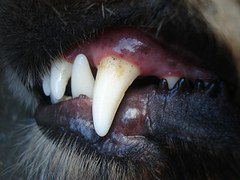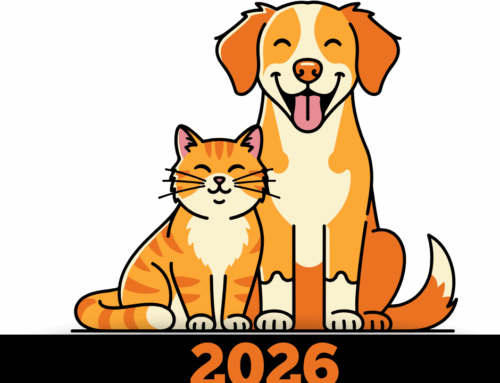 It’s a fair question – and one heard frequently at Town N Country. More than one customer has pointed out to us that cleaning a pet’s teeth costs more than cleaning their own teeth. Here are some of the reasons for the sticker shock of pet dental work. (Note: Read to the end, where we tell you the best way to save on a dental cleaning!)
It’s a fair question – and one heard frequently at Town N Country. More than one customer has pointed out to us that cleaning a pet’s teeth costs more than cleaning their own teeth. Here are some of the reasons for the sticker shock of pet dental work. (Note: Read to the end, where we tell you the best way to save on a dental cleaning!)
My, My, What Big Teeth You Have! Your teeth are cleaned every six months, and because you’re a (somewhat) willing participant in the process, a cleaning takes less time. Your pet may perform various tricks like rolling over or sitting on command, but we haven’t met the pet that’s mastered “open wide” or “please spit.” That’s why we have to use general anesthesia…
Count Backwards from 10 to 1. Other than a visual exam, dental procedures are performed when your pet is under general anesthesia. To make sure that this is done as safely as possible, we prescreen your pet, including a comprehensive physical exam, blood test and any other tests (like x-rays or echocardiograms) that we deem necessary.
You can be assured that the administration and monitoring of your pet when he’s under anesthesia is precisely managed. Vital signs are closely monitored through EKG and by measuring levels of blood oxygen, expired carbon dioxide and blood pressure.
Let’s Get Technical. Veterinary dental technology has advanced to a level where dental disease that would formerly have gone undetected can be discovered and treated quickly. Digital radiography allows an image to be picked up by a digital sensor in your pet’s mouth and flashed to a computer screen a few seconds later.
High speed drills allow our vets to extract, drill or perform other procedures much faster than before. All these advances add to the cost of your pet’s oral care – however, they also add to the quality and length of your pet’s life.
It’s Worth It! Pets with good oral health are healthier overall. Within Town N Country’s community of clients, you can observe older dogs and cats that appear younger and exhibit more energy after they’ve had dental intervention. New therapies can save teeth and lessen oral pain – and who doesn’t feel better when their pain is alleviated?
HOW TO SAVE MONEY! If you’re looking for a way to save money on your pet’s dental health, brush their teeth daily. Dental cleanings under anesthesia can be greatly reduced if this habit is introduced early and practiced consistently. (Read about how to brush your pet’s teeth here.)
The Bottom Line. You’ve never had a safer time for your pet to undergo a dental procedure – even if your pet is older or is considered a high risk patient. A variety of improved methods work together to benefit your pet’s healthy life. And that’s what we want for the sake of your pet – and for you.





